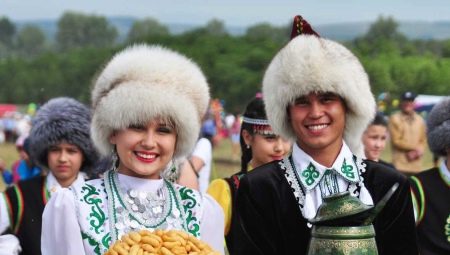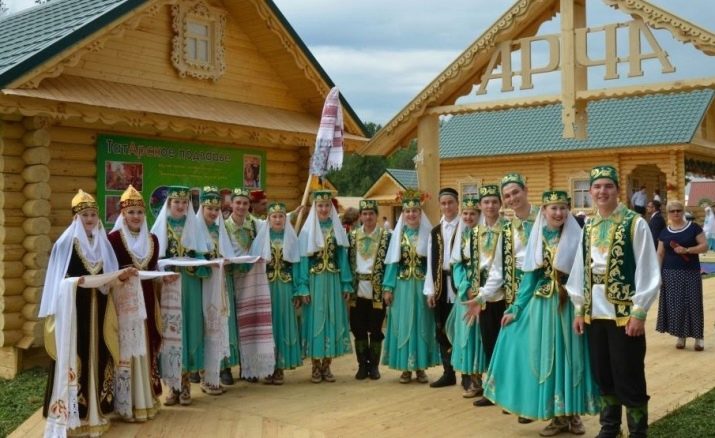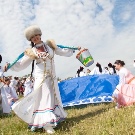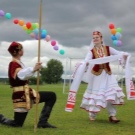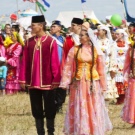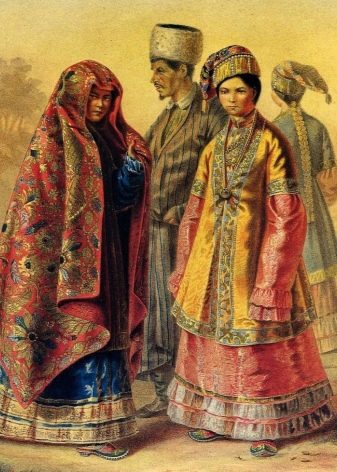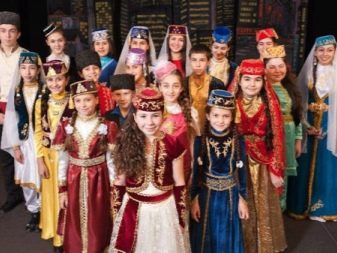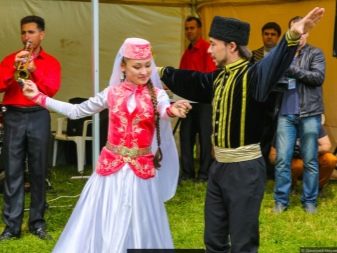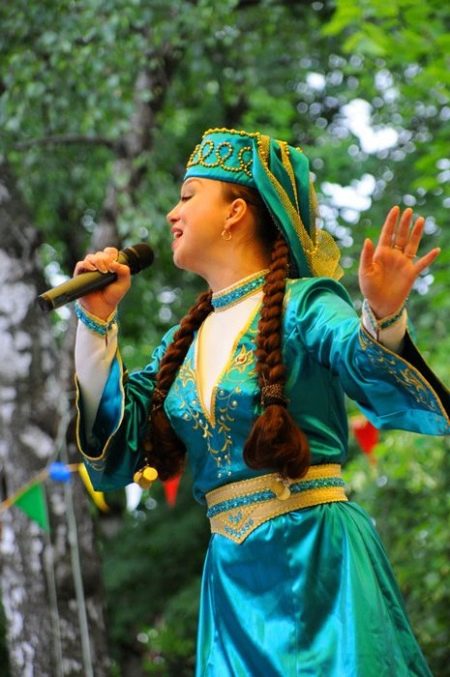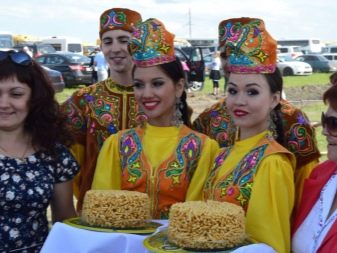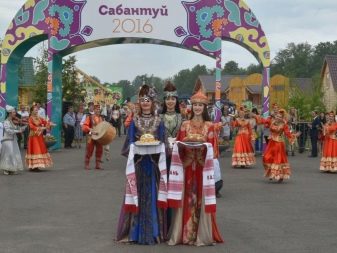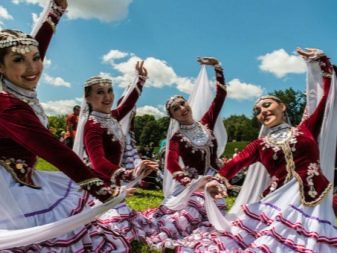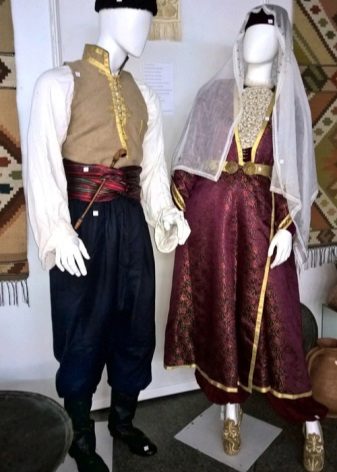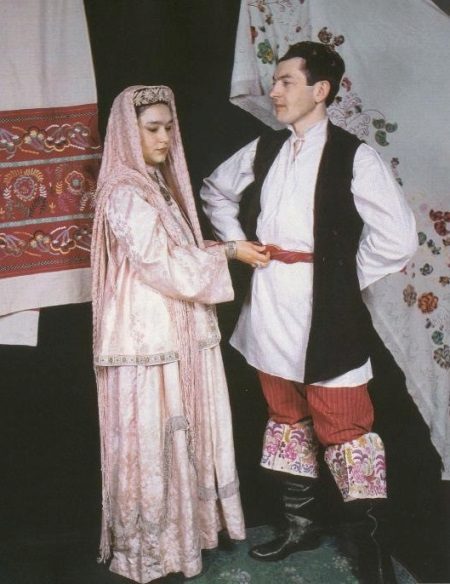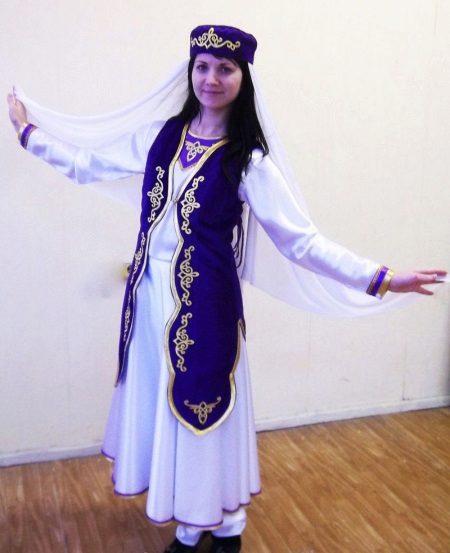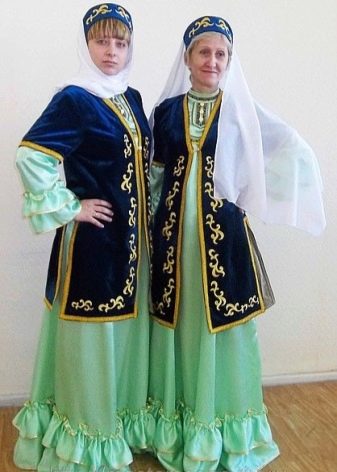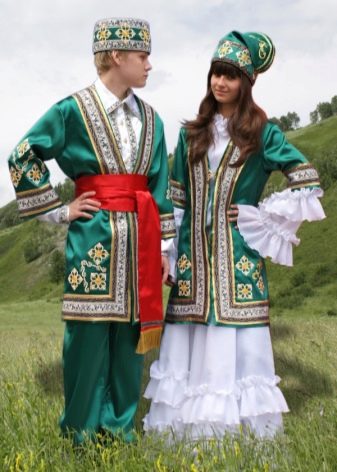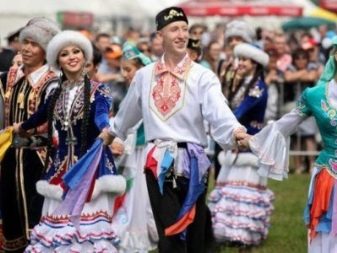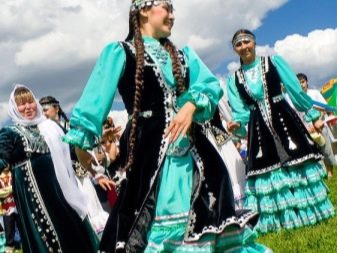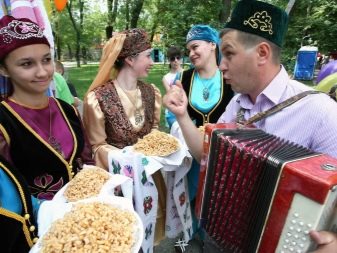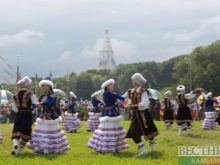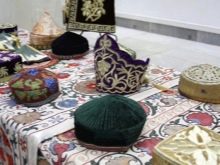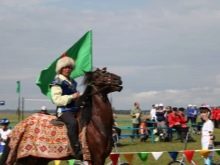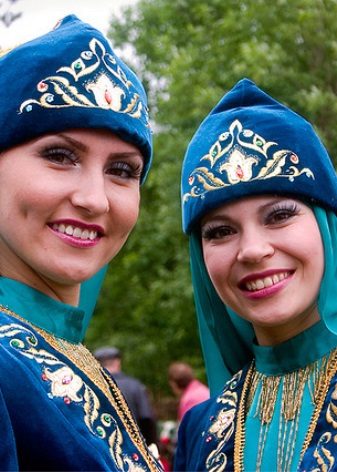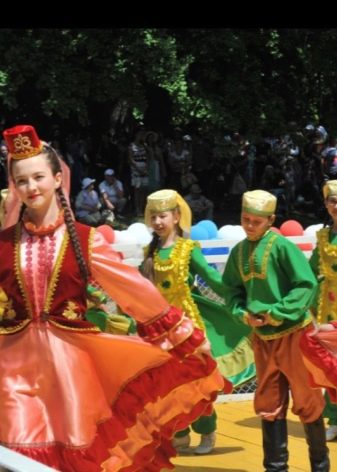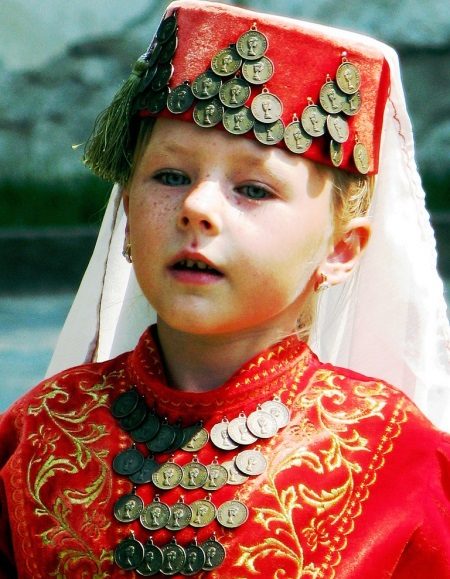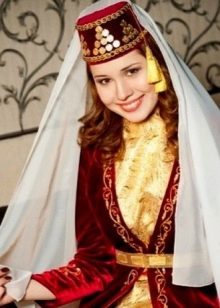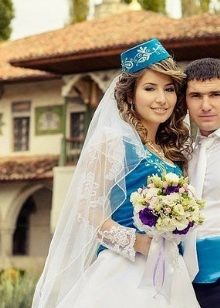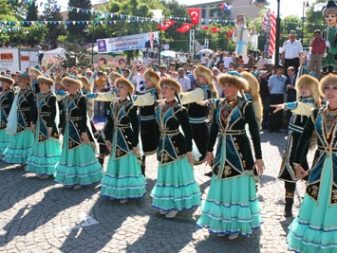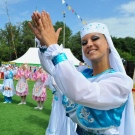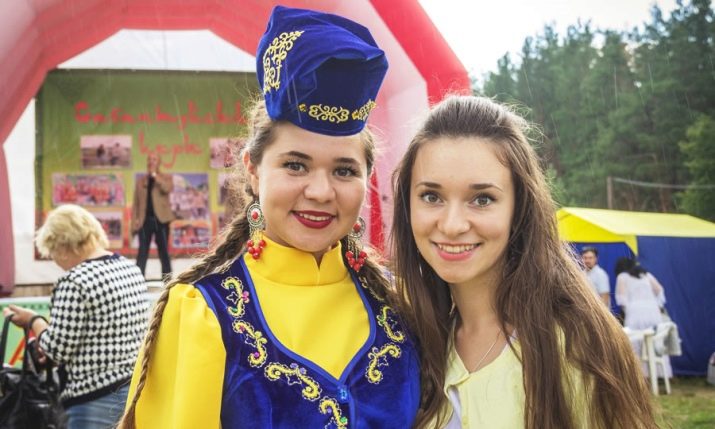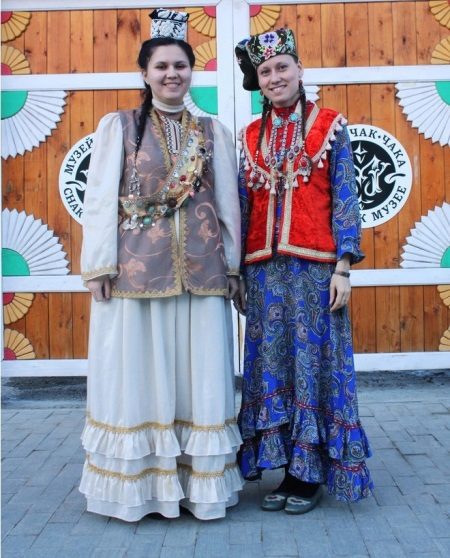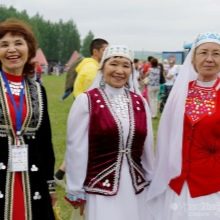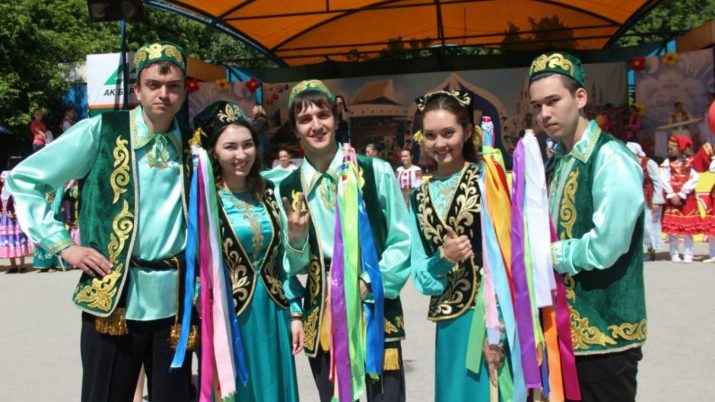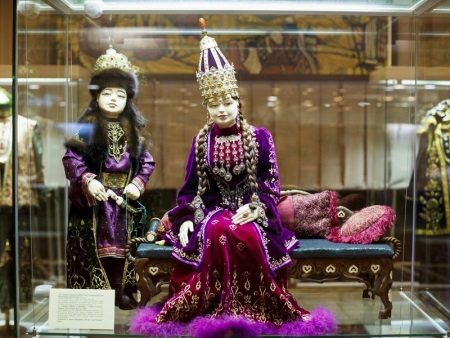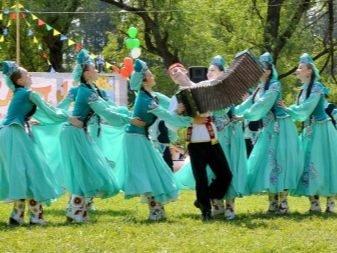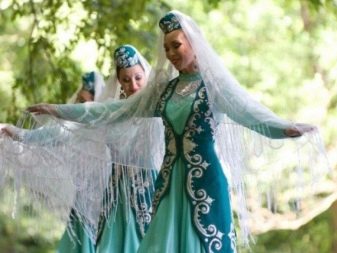The traditional costume was, is and will remain one of the most striking indicators of a person’s belonging to a particular nation.
Despite the fact that fashion does not stand still, and it is often impossible to distinguish a European from an Asian by clothing, the national costume remains the pride and wealth of every nation, and traditions associated with its manufacture are passed on from the older generation to the younger.
Story
Tatar costume is a very general concept that unites national clothes of different subgroups of Tatars, including Crimean ones. The Volga Tatars, as well as Eastern traditions and religion, paid great attention to the appearance of the costume.
The appearance of the costume was greatly influenced by the nomadic way of life of the Tatars. The clothes were designed in such a way that it was comfortable to ride in it, it was not cold in winter and not hot in summer. She was supposed to be quite light and beautiful. For tailoring, fur, natural leather, camel or lamb felt and cloth were used.
Today, national costume is rarely seen on the streets of Tatarstan. Most often it can be seen as a dance or stage outfit.
Features
The Tatar national costume, besides the fact that it consists of a shirt, a dressing gown, and trousers, has one more peculiarity: it is sewn in a rather limited color range. These are mainly cherry, blue, white, yellow and green.
For dress, headgear and shoes characterized by abundant use of decor. Usually, it is embroidery with gold threads, beads, coins. The traditional ornament for embroidery is floral.
Varieties
Male and female national costume looks a little different from each other. The main element of the costume is a wide tunic shirt with lateral wedges and a deep neckline on the chest. Kazan Tatar cutout replaced the stand-up collar. The shirt was rather long, wide and worn without a belt. Women's tunic used to be even longer - approximately to the ankles.
Shirt could be wool, cotton, silk or even brocade. For its decoration, colored ribbons, gilded braid, delicate lace, beads, etc. were used. Under the woman's shirt, the chest part (cuccoche or tesheldrek) was closed, covering the neckline of the chest. Bloomers were sewed from coarse linen fabric: for women from monophonic material, for men - from striped.
Outerwear worn on the shirt, was necessarily swinging. It has a slightly fitted silhouette, side wedges and is smelled on the right side. An obligatory element for outerwear was a knitted or textile belt.
Women's costume was different from men's only in length and decor - it was decorated with fur, embroidery, appliqués, etc. Over the shirt women wore camisoles (bathrobes, swing blouses) knee-length or mid-thigh. Camisole could have sleeves or be without them. The hem, sleeves and armholes were decorated with braid, feathers, coins, etc.
The hem and sleeves of the tunic were decorated with large flounces. Be sure to use a large number of jewelry: earrings, rings, rings, monisto, pendants, etc. The sleeveless jacket, worn over the shirt, was sewn of velvet and decorated with fur or golden braid.
Male headdress consisted of two parts: the bottom and top. The skullcap, on which a felt hat (kalpak), fur hat or turban was put on, was placed on the lower or home decorations.Kalpak - a cone-shaped hat, sometimes with curved margins. This hat was worn by aristocrats, decorating it with velvet or satin on the outside, and the inside was lined with white soft felt. Bright, multi-colored skullcaps were intended for young people, middle-aged and elderly Tatars wore plain models.
The headdress of the woman pointed to her marital status. Young girls wore the same type of textile or a fur hat “takiyu” or “burek”, which was decorated with embroidery and decor of beads, silver, coral. The head of married women was decorated with a completely different headdress, which consisted of three parts. The lower part was intended for fixing hair (women wore 2 braids), then a veil was going on and, finally, a bandage, a hoop, a scarf or a cap fixing the veil.
As a national shoe, Tatars used boots (reads or ichigi). Casual models were black, festive shoes decorated with ornaments in mosaic technology. As a working shoe used a kind of Russian bast (chabat).
The national costume has never been without jewelry. There were a lot of them, and they were worn by both men and women. These were large gold rings, seals, rings, belt buckles, women's bevets, earrings, pendants, rings, etc.
Children's clothing was almost the same and was not divided into clothes for girls and boys. The only difference was the color gamut. The costume for girls was sewn in bright, multi-colored colors: red, green, blue. The costume for the boy was made in more restrained shades of blue or black. With the growth of the child, the national costume gradually changed: jewelry was added, hats and shoes were changed.
Festive
Dresses for celebrations or special occasions are different from everyday ones, primarily, the material from which they are sewn and an abundance of decor and decorations.
The color of the wedding dress can be white, as well as rich green, burgundy or blue, according to Tatar traditions. Another option is also possible: a snow-white dress + boots and a camisole, made in one of the listed colors. The head must be necessarily covered with a wedding veil or an embroidered kalfak.
A men's wedding suit is performed, as a rule, in a dark blue color and is embroidered with national ornaments with the help of gold threads. Headdress is required.
Modern wedding dresses, although they are often sewn not in the European style, will definitely retain the national flavor and loyalty to the ancient traditions. This is manifested in the classic style, length, the presence of jewelry, traditional ornaments, etc.
The Tatar dance costume also underwent certain changes. It may be shorter than the classic one, be made of other materials, but the national style nevertheless remains. Fur vest razdetayk, traditional hat with a tassel or veil, traditional ornaments - all this makes the costume for dancing very recognizable.
In modern style
Time does not stand still and the ancient national costume is somewhat modified. A stylized Tatar costume may have a different design or length, but it must preserve details that are recognizable for traditional attire.
For example, an ornament, most often, vegetative. Mandatory cap - kalfak. It can have a slightly different shape, be tailored to the dress itself or be monophonic. Be sure to a large number of jewelry - and on the suit, and the girl.
Items
The costume itself, regardless of whether it is old or modern, necessarily consists of several elements: a shirt (kulmek), harem pants (Yaschtyn) and outerwear.
Depending on the class or the material situation of a person, the costume differed in the number and variety of decor, embroidery, material used and the price for it.The costume was decorated with embroidery, decorated with colored beads, beads, satin ribbons and fur.
Headgear is considered an essential element of the Tatar costume. In men and women, he has his own. In addition, young girls and married ladies also wear different headwear.
Boots were considered national shoes of the Tatars. They were worn throughout the year. For the summer, softer leather was used, women's boots were decorated with applique and embroidery.
An important detail of the national costume is a belt. For its decoration, large buckles or embroideries made of gold or silver were used.
the cloth
Depending on whether the costume was casual or festive, different materials were used for its tailoring.
Everyday outfits were sewn from cotton linen or homespun cloth. Sheep wool or cotton wool was used as a heater for outerwear. Elegant shirts and camisoles were sewn from brocade, silk, and wool. They were decorated with gold braid, lace, expensive embroidery. The fur of sable, arctic fox, and fox went to the finish.
Images
Tatar festive costume is made in accordance with current fashion trends. The style, length, headdress, and ornamental decoration remained unchanged.
It is impossible to imagine the festive attire of the Tatar Snow-white tunics on the floor are decorated with rich gold trim. Festive brocade or velvet caftans and hats are also decorated with gold.
